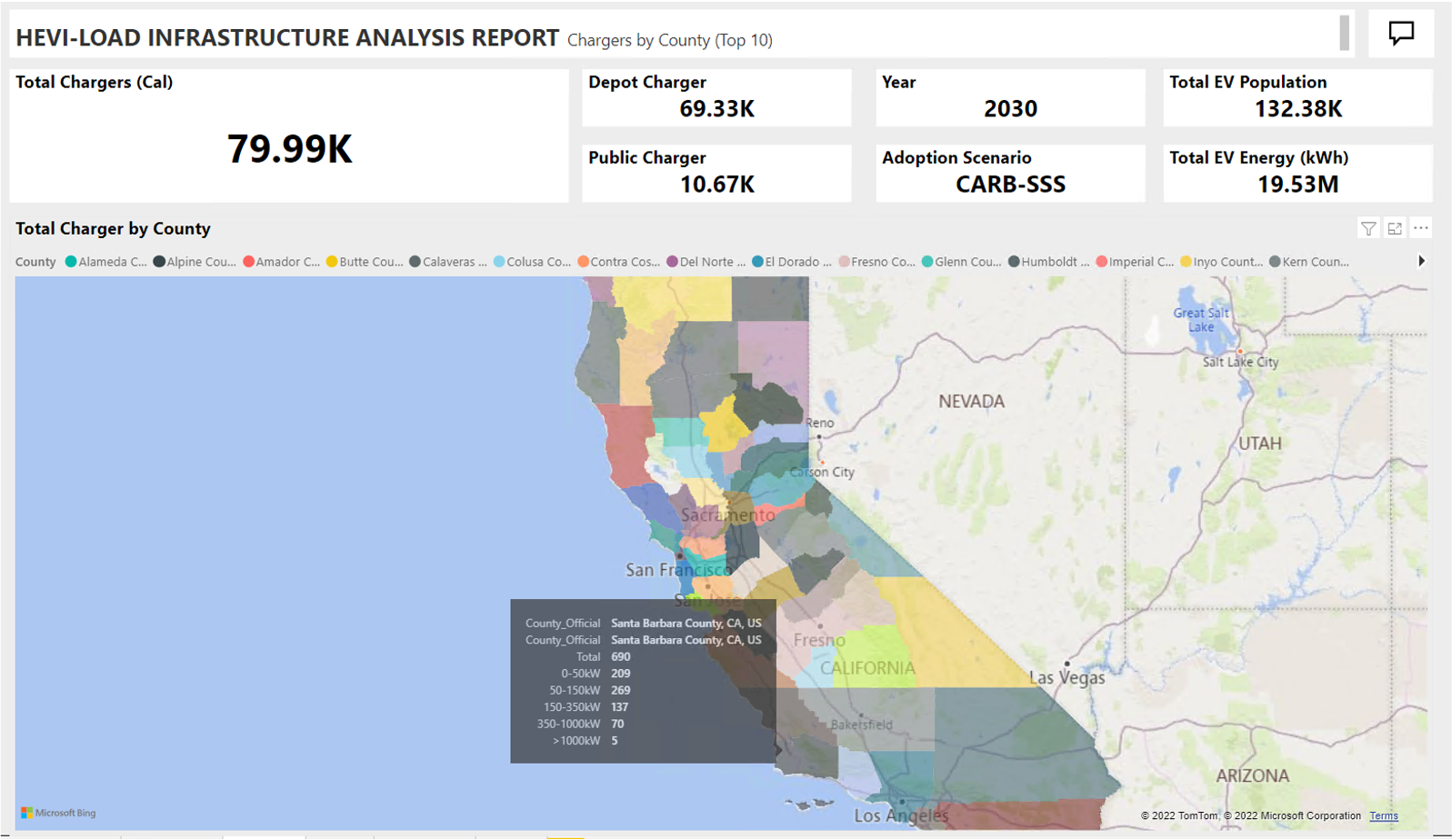Vehicles and the Grid
Preparing for a World with Electric Vehicles
As the number of electric cars increases, we are working on ways the grid can not only meet, but benefit from, this boost in power demand.
Integrating Electric Vehicles & the Grid

Vehicle-Grid Integration (VGI) research at Lawrence Berkeley National Laboratory (Berkeley Lab) consists of simulating, testing, and analyzing electric vehicles (EVs) as special loads for utility grids based on their charging flexibility and relatively high power levels. For example, VGI technologies can minimize grid costs and customer electricity bills through "smart charging" and mitigate distribution-level impacts and regional grid issues such as maintaining 60 Hz frequency.
VGI also enables EVs to function as bulk storage for utility grids by charging when the grid's renewable energy percentage is high. This is particularly valuable when supply exceeds demand, risking the supply's curtailment, as is happening increasingly in California and other high-renewable-electricity regions. Using an advanced vehicle-to-grid (V2G) system, EVs act as fully bi-directional storage devices, displacing the need for potentially large amounts of dedicated grid storage and offering microgrid integration opportunities. A microgrid consists of energy generation and energy storage that can power a building, campus, or community when not connected to the electric grid, for example, in the event of a disaster.
Berkeley Lab and University of California, Berkeley (UC Berkeley) scientists collaborate with researchers in other national labs, University of California campuses, and multiple public and private organizations on VGI research projects.

